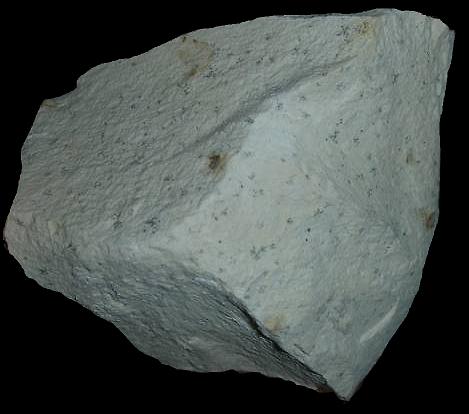Chalk

Photographed by Michael P. Klimetz
MISSISSIPPI
Chalk is a soft, white, porous sedimentary rock. It is a form of limestone composed of the mineral calcite. It forms under relatively deep marine conditions from the gradual accumulation of minute calcite plates (coccoliths) shed from microorganisms called coccolithophores. Chalk can also refer to other compounds including magnesium silicate and calcium sulfate. Chalk is resistant to weathering and slumping compared to the clays with which it is usually associated, thus forming tall steep cliffs where chalk ridges meet the sea. Chalk hills, known as chalk downland, usually form where bands of chalk reach the surface at an angle, so forming a scarp slope. As a consequence of its high porosity it can hold a large volume of water. Chalk has long been quarried in England, providing building material and marl for fields. The Deneholes of southeast England are a notable example of ancient chalk pits. The Chalk Group is a European stratigraphic unit deposited during the late Cretaceous. Chalk comprises the famous White Cliffs of Dover in Kent, England. The Champagne region of France is mostly underlain by chalk deposits. Chalk is composed mostly of calcium carbonate with minor amounts of silt and clay. It is normally formed underwater, commonly on the sea bed, then consolidated and compressed during diagenesis into the form commonly seen today.
Photographed by Michael P. Klimetz
Oktibbeha County
GEORGIA
Photographed by Michael P. Klimetz
Kent
UNITED KINGDOM
Photographed by Michael P. Klimetz
Kent
UNITED KINGDOM
Photographed by Michael P. Klimetz
Kent
UNITED KINGDOM
Photographed by Michael P. Klimetz
Kent
UNITED KINGDOM